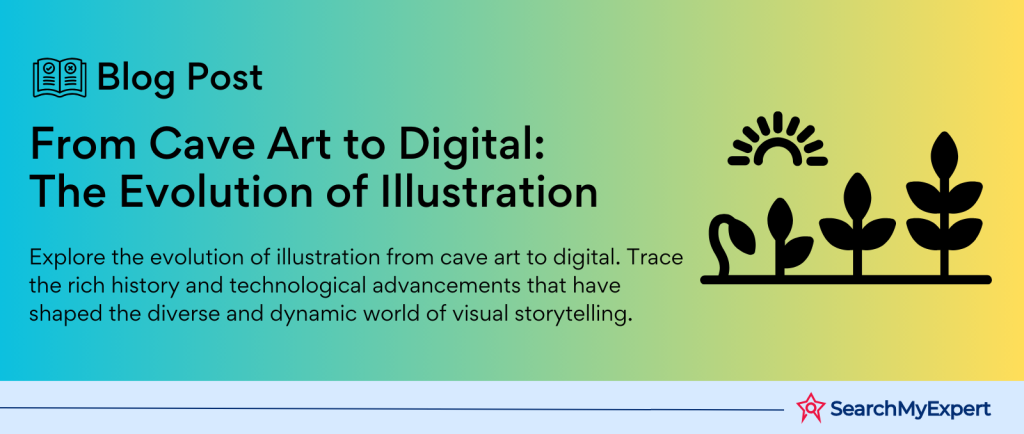Historical Styles in Illustration
Illustration: A Confluence of Art and Storytelling
Illustration stands as a magnificent beacon at the intersection of art and storytelling. It’s not just about drawing pictures; it’s a sophisticated language that communicates ideas, narratives, and emotions. Across the span of human history, illustration has been the silent narrator of stories untold, cultures unexplored, and imaginations unleashed.
The Evolutionary Tapestry of Illustration
The journey of illustration is as diverse as the history of humankind itself. From the cave paintings of our ancient ancestors to the digital masterpieces of the modern era, every brush stroke and pixel tells a story of technological innovation and artistic revolution. This rich tapestry of styles has been influenced by major artistic movements, each leaving an indelible mark on the canvas of time.
Technology: The Catalyst of Change
As our tools have evolved, so too has the art of illustration. The invention of the printing press opened new horizons, enabling the mass production of images. The digital age, with its cutting-edge software and hardware, has transformed how illustrators create and share their work, leading to unprecedented levels of creativity and collaboration.
Ancient Beginnings
The Dawn of Visual Storytelling
The story of illustration begins in the dimly lit caves of our ancient ancestors. These primal canvases, adorned with ochre and charcoal, mark the genesis of visual storytelling. The cave paintings, with their simple yet profound depictions of life, are the earliest forms of illustration.
Hieroglyphics: The Written Image
Moving from cave walls to the parchments of ancient civilizations, hieroglyphics in Egypt presented a sophisticated system of writing that blended illustration with text. These intricate symbols weren’t mere representations; they were stories etched in stone, capturing the essence of gods, pharaohs, and the daily life of the ancient Egyptians.
Illuminated Manuscripts: Art in Scripture
As we venture into the medieval era, the illuminated manuscript emerges as a beacon of artistic expression in a time of limited literacy. Monks and scribes painstakingly embellished religious texts with gold leaf, intricate designs, and vivid illustrations. These manuscripts were more than religious texts; they were visual symphonies that narrated biblical tales and moral lessons.
The Narrative and Symbolic Power
Each of these ancient forms of illustration served dual purposes – storytelling and symbolism. Cave paintings weren’t just depictions of hunting; they were tales of survival, rites of passage, and spiritual rituals. Hieroglyphics blended the literal with the metaphorical, creating a rich tapestry of cultural and religious narratives. Illuminated manuscripts, with their ornate illustrations, made sacred texts accessible and engaging, turning reading into a visual experience.
The Rise of Print Media
The Printing Press: A Revolution in Illustration
The advent of the printing press in the 15th century marked a seismic shift in the world of illustration. Johannes Gutenberg’s invention did more than just democratize the written word; it catapulted illustration into a new era. For the first time, images could be reproduced en masse, bridging the gap between art and the public.
Woodcuts, Etchings, and Engravings
As the printing press spread across Europe, three dominant techniques emerged: woodcuts, etchings, and engravings.
- Woodcuts:
This technique, involving carving an image into a wooden block, was the first to be widely used in printing. Woodcuts allowed for the mass production of images, making them accessible to a broader audience. They were often used in religious texts and playing cards. - Etchings:
Developed during the Renaissance, etching involved using acid to carve images into metal plates. This technique allowed for finer detail and greater control, leading to more intricate and expressive illustrations. - Engravings:
Similar to etching, engraving involved carving directly into a metal plate with a burin. Engravings offered even finer detail than etchings and became popular for reproducing works of art and for detailed maps and scientific illustrations.
The Impact on Society
These techniques transformed illustration from a craft practiced by a few to a medium that could reach many. They played a crucial role in spreading knowledge, shaping public opinion, and opening up new worlds of fantasy and reality. From Albrecht Dürer’s detailed woodcuts to Rembrandt’s expressive etchings, these methods became the voice of an era, capturing its essence in ink and paper.
Through these mediums, illustration became an integral part of society’s cultural and intellectual fabric, paving the way for the modern world of graphic arts.
Golden Age of Illustration
A Flourishing Era for Illustration
The 19th and early 20th centuries witnessed what is often termed the “Golden Age of Illustration”. This period saw a remarkable fusion of art and technology, as advancements in printing technology coincided with a surge in popular magazines and books. Illustrators were no longer just artisans; they became celebrated artists, their works eagerly awaited by a public with an insatiable appetite for visual storytelling.
The Emergence of New Styles
- Art Nouveau:
This style, characterized by its flowing lines and organic forms, emerged in the late 19th century. Art Nouveau illustrations were often seen in posters, advertising, and book covers, and were distinguished by their elegant, stylized nature motifs and curvilinear designs. - Art Deco:
Following Art Nouveau, Art Deco became prominent in the 1920s and 1930s. It was known for its bold geometric shapes, rich colors, and lavish ornamentation. Art Deco illustrations reflected the exuberance of the Roaring Twenties and the Machine Age, embodying a sense of elegance and modernity. - The Golden Age of American Illustration:
This period, spanning the late 19th to the mid-20th century, saw American illustrators achieve unprecedented popularity. Artists like Norman Rockwell, Maxfield Parrish, and J.C. Leyendecker became household names, their works gracing the covers of popular magazines like “The Saturday Evening Post” and “Life”. These illustrations captured the spirit of American life, with a blend of idealism and realism.
The Impact on Culture and Society
These styles and the illustrators who championed them played a vital role in defining the visual culture of their time. They not only entertained but also shaped public opinion, set fashion trends, and, in many ways, reflected the societal changes of the period.
The Golden Age of Illustration was a time when illustration was not just a part of the cultural landscape; it helped define it. The legacy of this period continues to influence modern graphic design and illustration.
Modern Experimentation
The Influence of Modernist Movements
The 20th and 21st centuries brought about an era of unprecedented experimentation in the world of illustration, driven by modernist art movements and technological advancements. This period saw illustrators breaking away from traditional methods and exploring new, avant-garde techniques.
Modernist Movements: Movements like Cubism, Surrealism, and Abstract Expressionism had a profound impact on illustration. Artists began to experiment with form, perspective, and color, creating works that challenged conventional notions of representation and narrative.
Technological Advancements: A New Frontier
Technology played a crucial role in this transformation. The development of photography, printing techniques, and, later, digital tools, opened up new possibilities for illustrators.
- Photorealism:
With the advent of high-resolution photography and advanced printing techniques, photorealism emerged as a popular style. These illustrations are characterized by their meticulous detail and lifelike accuracy, often indistinguishable from photographs. - Comic Book Art:
The mid-20th century witnessed the rise of comic book art, a genre that combined narrative storytelling with dynamic visual art. This style is known for its bold lines, vibrant colors, and dramatic compositions, creating an immersive and engaging visual experience. - Digital Illustration: The digital revolution has had perhaps the most significant impact on illustration. Digital tools have allowed illustrators to experiment with a vast array of styles and techniques, from hyper-realistic 3D renderings to abstract digital paintings. The ease of sharing and collaborating online has also contributed to a global community of artists, fostering diversity and innovation in the field.
Shaping the Visual Language of Our Time
These developments have not only expanded the boundaries of illustration but have also influenced how we perceive and interact with the visual world. From advertising and media to the arts and entertainment, modern illustration continues to shape the visual language of our time.
Global Influences
The World as a Palette
Illustration is not just a Western art form; it is a global language with diverse dialects. Each culture and region around the world contributes its unique voice to this visual symphony. From the delicate lines of Japanese woodblock prints to the fluidity of Chinese ink wash paintings, and the intricate detail of Indian miniature paintings, global influences have enriched the tapestry of illustration.
- Japanese Woodblock Prints:
Known as Ukiyo-e, Japanese woodblock prints flourished during the Edo period. These prints are celebrated for their vivid colors, clean lines, and depictions of everything from daily life to mythical creatures. Artists like Hokusai and Hiroshige brought this art form to the forefront, influencing Western artists like Van Gogh and Monet. - Chinese Ink Wash Paintings:
With a history stretching back over a thousand years, Chinese ink wash painting is a testament to the elegance of simplicity. Using varying concentrations of black ink, artists create landscapes, floral scenes, and animal motifs that are as expressive as they are ethereal. This style emphasizes the harmony between nature and humanity, a core tenet of Taoist and Buddhist philosophies. - Indian Miniature Paintings: Originating in the Mughal era, Indian miniature paintings are renowned for their intricate detail and rich use of color. These paintings often depict royal scenes, religious stories, and nature, characterized by their precise brushwork and vibrant palette. They are not just art; they are a visual narrative of India’s rich history and diverse cultures.
Bridging Cultures Through Art
These styles, each with their distinct aesthetics and techniques, showcase the breadth of human creativity. They remind us that illustration is a universal language, capable of transcending borders and bridging cultures.
The Ever-Evolving Art of Illustration
As we journey through the annals of illustration history, we are reminded of the art form’s incredible capacity for evolution and transformation. From ancient cave paintings to digital masterpieces, illustration has continually adapted to new mediums, styles, and cultural influences.
Key Takeaways
- Diverse Origins: Illustration’s roots are as old as civilization itself, evolving from primitive drawings to sophisticated digital art.
- Technological Influence: Each advancement in technology has propelled illustration into new realms, expanding its possibilities and reach.
- Cultural Exchange:
The diversity of global styles enriches the world of illustration, showcasing the unique perspectives of different cultures. - Artistic Expression:
Illustration remains a powerful tool for storytelling, communication, and artistic expression, adapting to the needs and tastes of each era.
Conclusion
As we look to the future, it’s clear that illustration will continue to evolve, embracing new technologies and influences. Its enduring role in communication, entertainment, and art is a testament to the human need for visual storytelling and expression. Illustration is not just an art form; it’s a living, breathing language that speaks across time and culture.
The journey of illustration is far from over. As long as there are stories to be told and experiences to be shared, illustration will continue to captivate, inspire, and connect us all.
Innovate your visual strategy with Illustrators Firms.
Table of Contents
Toggle






